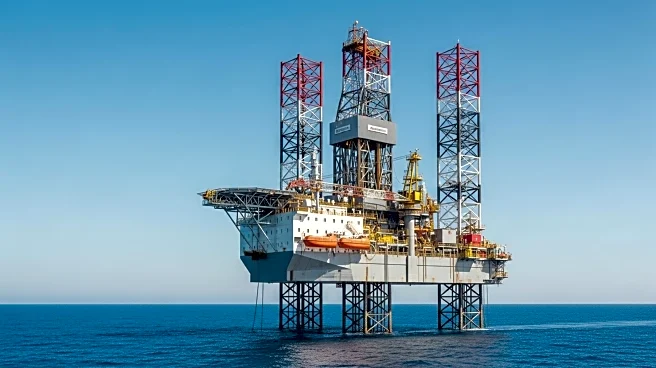What's Happening?
The North European Oil Royalty Trust (NRT) has reported a 23.8% year-over-year increase in quarterly distributions to $0.26 per unit for Q3 2025. This growth is attributed to higher gas prices and a favorable euro/dollar exchange rate. Despite this positive performance, the trust faces challenges due to the depleting nature of its underlying assets and regulatory pressures in the North Sea. The trust's total royalty income increased by 6.5% to $2.62 million, with natural gas accounting for 93% of cumulative royalty income. However, structural challenges remain, as evidenced by a fiscal 2024 net loss of $0.48 million despite revenue of $2.46 million.
Why It's Important?
The increase in NRT's distributions highlights its ability to leverage favorable market conditions, but the sustainability of this growth is uncertain. The trust's reliance on volatile gas prices and currency exchange rates poses risks to its long-term stability. Additionally, regulatory changes in the North Sea, such as increased profit taxes and emissions assessments, could impact future production and profitability. Investors must consider these factors when evaluating NRT's potential as a high-yield investment, balancing short-term gains against long-term risks.
What's Next?
Investors should monitor operator development activities, such as enhanced recovery projects by DEA, ExxonMobil, or Shell, which could extend the life of NRT's concessions. Energy pricing trends and regulatory shifts will continue to be critical drivers of royalty income. The trust's future performance will depend on its ability to navigate these challenges and maintain operational consistency.
Beyond the Headlines
The regulatory landscape in the North Sea is becoming increasingly stringent, with measures that prioritize energy security over climate goals. This shift could affect NRT's operations and profitability, as stricter emissions rules and tax hikes may create additional hurdles. The trust's ability to adapt to these changes will be crucial for its long-term viability.











